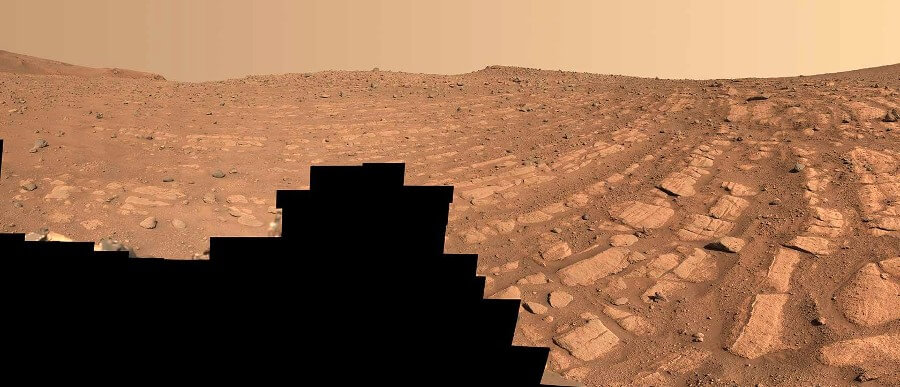Rock-based evidence is causing scientists to reevaluate the appearance of watery environments on ancient Mars.
Fresh images captured by NASA’s Perseverance rover potentially reveal indications of what might have once been a vibrant river on Mars. This river, deeper and more swiftly-moving than any previously observed, formed part of a network of watercourses that streamed into Jezero Crater, the region the rover has been probing since its landing over two years prior.
Unravelling the nature of these aquatic environments could assist scientists in their quest to unearth indications of ancient microbial life potentially preserved in Martian rock.
Perseverance is investigating the summit of a fan-shaped accumulation of sedimentary rock, standing at a height of 250 metres, with curving layers suggestive of flowing water. Researchers wish to ascertain whether the water flowed in comparably shallow streams, akin to the evidence found by NASA’s Curiosity rover in Gale Crater, or a more forceful river system.
Two new mosaics, compiled from hundreds of images taken by Perseverance’s Mastcam-Z instrument, tend to suggest the latter, offering crucial clues: coarse sediment grains and cobbles.
Libby Ives, a postdoctoral researcher at NASA’s Jet Propulsion Laboratory in Southern California, which operates the Perseverance rover, hinted that these findings suggest a high-energy river carrying significant debris. The more potent the water flow, the more capable it is of transporting larger pieces of material. Having studied Earth-based rivers and spent the past half year scrutinising images of the Martian surface, Ives has found it fascinating to observe terrestrial processes in alien rocks.
Years ago, researchers noticed a sequence of curving bands of layered rock within Jezero Crater, which they named “the curvilinear unit.” These layers were visible from space and are now accessible for closer inspection thanks to Perseverance.
One site within the curvilinear unit, humorously dubbed “Skrinkle Haven,” is featured in one of the new Mastcam-Z mosaics. There is certainty among the scientists that the curved layers here were formed by powerfully flowing water, but the detailed imagery from Mastcam-Z has sparked debate over the exact type of water flow: a snaking river similar to the Mississippi, or a braided river like Nebraska’s Platte, which forms small islands of sediment known as sandbars.
From a ground perspective, the curved layers seem to be organised in rows that ripple across the landscape. They might be the remnants of shifting river banks, or traces of sandbars that formed in the river. These layers were probably taller in the past. Scientists suspect that once these sediment piles hardened into rock, they were gradually eroded by wind over many years and whittled down to their current size.
Michael Lamb of Caltech, a river specialist and collaborator with the Perseverance science team, suggested that the wind behaved like a scalpel, slicing the tops off these deposits. He noted that similar deposits can be found on Earth, but are never as clearly exposed due to vegetation cover.
A second mosaic taken by Perseverance depicts a separate site, part of the curvilinear unit and roughly 450 metres from Skrinkle Haven. This location, named “Pinestand,” is a solitary hill bearing sedimentary layers that reach upwards, some as high as 20 metres. The team believes these tall layers may also have been formed by a powerful river, but they are considering other possibilities as well.
Katie Stack Morgan of JPL, the deputy project scientist for Perseverance, expressed excitement about entering a new phase of Jezero’s history and observing such environments on Mars for the first time. She pointed out that they are now considering rivers on a different scale than before.
Aprimary goal for the Mars mission of Perseverance is astrobiology, which includes the search for signs of ancient microbial life. The rover will characterise the planet’s geology and past climate, pave the way for human exploration of the Red Planet, and be the first mission to collect and store Martian rock and regolith (broken rock and dust).
Future NASA missions, in partnership with the ESA (European Space Agency), are set to dispatch spacecraft to Mars to collect these sealed samples from the surface and return them to Earth for comprehensive analysis.
The Mars 2020 Perseverance mission is a part of NASA’s Moon to Mars exploration strategy, which incorporates Artemis missions to the Moon designed to prepare for human exploration of the Red Planet.
The Perseverance rover is built and managed by JPL, which is operated for NASA by Caltech in Pasadena, California.
For more about Perseverance, visit:


